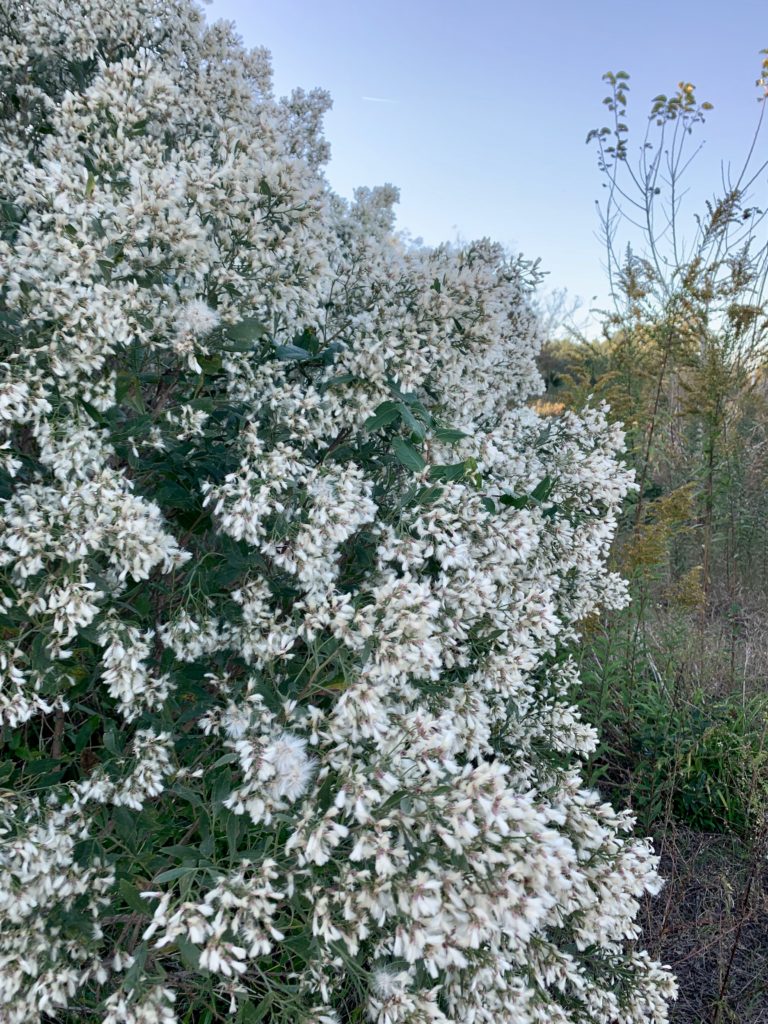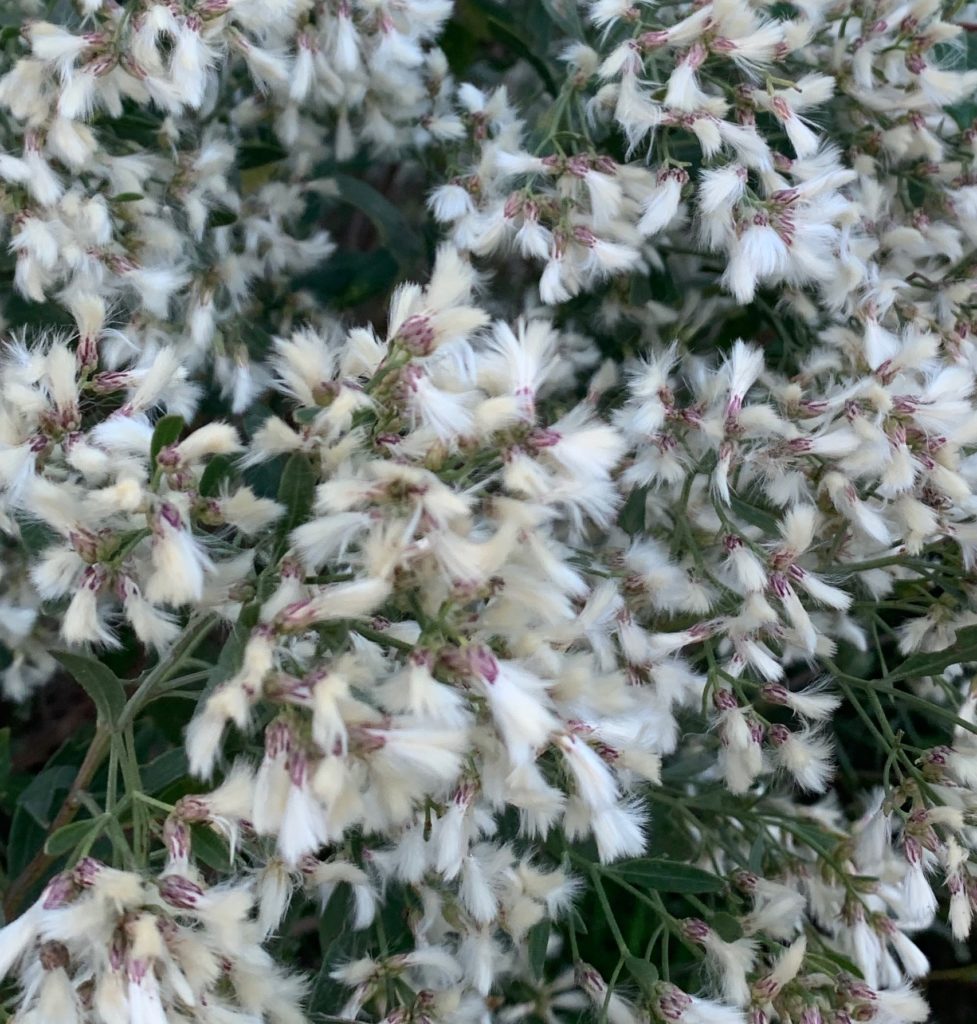
by Mary Reid Barrow
This time of year, a look across the marsh can suddenly give you the illusion that shrubs along the shoreline are covered in new fallen snow.
Snow in November!
At least that’s what salt bush can do to me. I see its blooms from afar and my eyes play tricks on me. The flowers that mound up on the bushes like snow are a beautiful sight in fall when not much else is in bloom.
Salt bush is only one of many familiar names for the shrub. Some of its monikers are sea myrtle, groundsel tree or bush and Baccharis from its Latin name, Baccharis halimifolia.
But no name captures the ethereal beauty of salt bush this time of year. Like melting snow, its beauty is fleeting too. Soon after the puffy silvery clusters of white flowers, all crowded together, reach their full glory, they give way to fluffy seed heads that disperse across the marsh, as if they were snowflakes too.

For all its dainty beauty, salt bush is a tough old girl. Yes, it is the female species of Baccharis that goes all out with its blooms Salt bush also grows in the high marsh and withstands salt spray. It digs its roots into the marsh to help hold the line against flooding and erosion in the wetlands.
The flowers also are a late source of nectar for bees, butterflies, moths and other insects as well as some birds. Birds also use the dense branches of salt bush for cover and nesting.
Before bloom time, you can confuse salt bush with marsh elder (Iva frutescens) because they look similar and both grow in the high marsh. Both are in the aster family but are about as far from a traditional aster as you can get. Marsh elder leaves are paired and saltbush leaves grow in alternates.
But it’s the blooms that really make the difference. Those blooms that light up the marsh this time of year tell all that world that it’s salt bush and no other.
For a few weeks salt bush stands above all the rest as it decorates the marsh, heralding the holiday season.
Do you have a favorite tree or plant with a story to tell? What relationships have you observed between plants and critters? Who eats whom? Who has babies where? Send an email to maryreid@lrnow.org